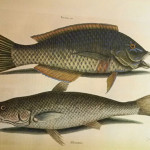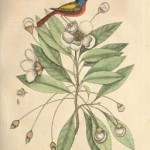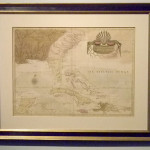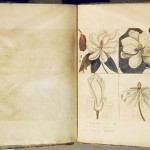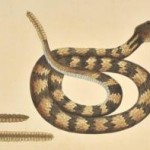In conjunction with the 300th anniversary of Mark Catesby’s first voyage to the New World, the Gibbes is hosting a special exhibition of Catesby’s prints and two rare bound volumes of his work. This British-born artist, scientist, and explorer, set sail for the American Colonies for the first time in 1712. During his seven year stay, Catesby began studies of the natural world that would occupy the rest of his life. He traveled through parts of the Appalachian Mountains and to Jamaica collecting botanical samples and making sketches of American flora and fauna. His discoveries impressed the scientists of his day and after Catesby returned to England in 1719, London’s Royal Society—then led by Sir Isaac Newton—reviewed his findings and raised funds for Catesby to return to the Colonies for further study.
Catesby made his second voyage to British North America in 1722. This time, his port of arrival was Charleston. This four year sojourn, which allowed Catesby to explore and document the natural habitats of the Carolinas, Florida, and the Bahamas, ultimately resulted in the first major work on New World botanical and animal life, The Natural History of Carolina, Florida and the Bahama Islands. Catesby personally translated his original watercolor paintings into the 220 engraving plates of birds, reptiles, amphibians, fish, insects, and mammals that illustrate his monumental, two-volume study—a process that took him nearly twenty years. Accompanying the plates, are Catesby’s descriptions of the plants and animals as well as the soils, climate, agriculture, and Native Americans that he observed during his journeys.
Though Catesby considered himself a scientist first and an artist second, his lively depictions of animal and plant life are considered masterful works of art and his meticulous observations served as the foundation for the work of other significant scientists and artists including Carl Linnaeus and John James Audubon.
This special exhibition featuring rarely seen works from both private and public collections will be on view until January 30, 2013.
—Sara Arnold, Curator of Collections, Gibbes Museum of Art
Published November 30, 2012


